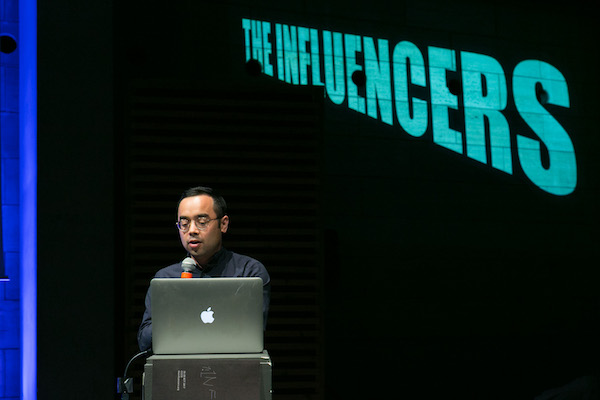49 million Instagram influencers hacked. (Are there really that many?)

Somebody posted a database of 49 million Instagram influencers where anyone could see it. This event says more about the stupidity of the term “influencer” than it does about breaches and leaks.
According to TechCrunch, the database originated with Mumbai-based Chtrbox, a marketing firm that pays influencers to post things. Each record included the number of followers, reach and engagement statistics, and contact information such as emails and phone numbers. Most of that is accessible through scraping info from Instagram, but the emails and phone numbers had to come from a breach; Instagram has previously reported a bug that exposed people’s personal information.
Breaches are hardly even news at this point. But 49 million influencers? 49 million?
These are not influencers. And most consumer influencers aren’t.
What is an “influencer”? (It makes me wince to even write that word.) According to Lee Odden of TopRank Marketing, the definitive expert on this topic:
Influencer Marketing is the practice of engaging internal and industry experts with active networks to help achieve measurable business goals.
Clearly, there cannot be 49 million people with identifiable expertise. And none of the reports say the database identified what kind of influencer these people were (fashion? world travel? SEO? skydiving?).
So no, this is not a list of influencers. It is a list of people along with the number of followers and engagements they have.
You could attempt to persuade them to talk about your product (and the database assigned a worth to each account, presumably based on an algorithm). But for most of these people, that would be wasteful and dumb. If someone has 1000 random followers, they are not an influencer. You cannot effectively pay them to say what airline to fly, what saucepan to cook with, or what underwear to choose, because nobody cares what they think.
I agree with Lee that influencer marketing should start with identifying who has influence in your market. Those folks have to have some integrity or they are worthless. You could try to persuade them that your products or services are worth talking about, or you could pay them and have them make a sponsored post.
These are PR and advertising activities.
As for “microinfluencers,” (1000+ followers) or “nanoinfluencers” (even fewer), you should probably forget it. Their credentials and influence are weak.
Even if you can effectively win over enough of them to matter, will it be worth the effort? Will they follow FTC disclosure rules or subject you to a regulatory action?
What happened with Instagram and Chtrbox is an Instagram data breach. Nearly 50 million regular people had their information posted. This is terrible. But it has nothing to do with influence.
Hi Josh, Clearly a few publications are sensationalizing by saying the 49 million are all “influencers and on that point I pretty much agree.
Since you have appropriated my definition of influencer marketing as a general concept, it’s worth noting that I share that definition as specific to B2B. I only work with, write about and engage on B2B influencer marketing topics which is very different than B2C.
Expertise is far more important for B2B influencer marketing. With B2C the ability to create media and have an interested audience is the focus for what brands find valuable. I don’t think my definition works as a universal concept, only for B2B.
I didn’t mean to misrepresent your definition. I urge everyone who’s interested in influence to follow Lee, his approach is directly on target.
Amen. I couldn’t agree more.
https://www.philsimon.com/blog/social-media/why-i-despise-the-term-influencer/
Just a little over a month ago we reported that a significant number of Instagram Influencers had been hacked. In that article we discussed why it was important for Instagram to secure its users’ passwords more securely. We also recommended some things that Instagram users can do to help prevent their pages from being hacked in the future. A few days later, we’re still following up on this story but have heard that efforts are now underway to fix these problems. For example, Instagram has been working with Google to provide notifications whenever an Instagram user posts a page on their account. While this won’t be a solution for the millions of users that use Instagram, it’s a step in the right direction.What’s going on now is that Instagram is working on ways to prevent users from accidentally clicking on a link that infecting their computers. This is a big problem, as many Instagram pages are infected with malicious adware. This adware then causes ads to show up on the pages of compromised users, causing them to lose money and productivity. The goal of these upcoming solutions should be to reduce the risk of compromising Instagram pages.
On another front, Instagram has also announced that they’re going to be making their feeds more visible. This will make it harder for people on the outside to infiltrate the Instagram system. This is another step in securing the safety of Instagram pages and users.
Social media platforms are rapidly evolving into powerful tools for businesses to engage and connect with customers, providing them with a one-on-one connection through content and personalized experiences. In addition, this new medium is creating new business relationships as it provides an easier way for businesses and brands to build trust and identify specific customer demographics. Social media marketing through the help of influencers can boost a company’s image, garner new clientele and expand visibility through more strategic channels, all of which are great benefits for businesses that are willing to invest in their future. However, while every social media platform has distinct benefits, following proven strategies for engagement through influencers is still the best way to make the most out of these platforms and reap the greatest rewards.